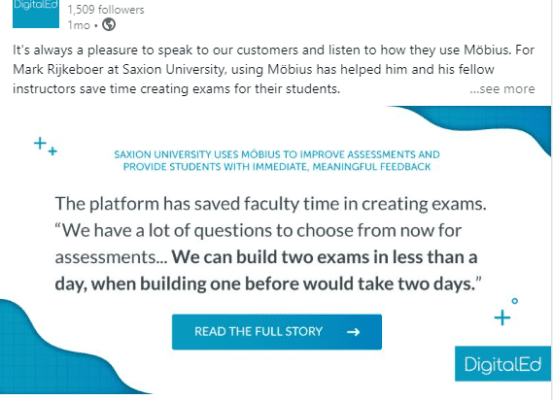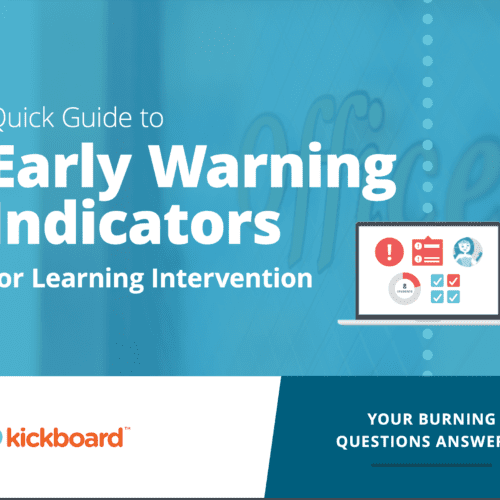
According to the 13th Annual B2B Content Marketing Report, case studies are one of B2B marketers’ three most popular content assets. That definitely has been my experience. I usually receive at least one case study writing assignment a month. Most of the time, I’ve seen those case studies placed on the company website’s resource section and handed off to sales representatives. But when companies stop there, they are missing opportunities to put their case study content in front of a larger number of prospective buyers. In short, they need to promote and repurpose their case study.
A well-written case study is a powerful marketing tool that enables potential customers to picture the success they could enjoy if they choose your solution. Once you’ve created a case study that brilliantly demonstrates how a customer benefitted from your product or service, you can keep leveraging that great content in multiple ways. This post shares 14 ideas for getting the maximum ROI from your efforts.
Why you should promote and repurpose your case study
Your case study can’t do its job of showing prospects why they should choose your business if most of those prospects don’t know that it even exists. But if you don’t promote your case study, that’s what will happen — very few of your prospects will ever see the content.
Additionally, repurposing case studies (reusing all or part of the piece in different formats and channels) maximizes your return on the time and energy you invested conducting interviews, finding an angle, selecting graphics, acquiring approvals, etc. You’ll also maximize your audience reach by telling the case study’s story in multiple ways and on multiple channels.
Now that you know why you should promote and repurpose your case study, let’s explore how to do that.
Ways to promote your case study
First, let’s focus on promoting the original content asset — the case study itself.
1. Leverage your social media platforms
Promoting your case study on different social media platforms enables you to significantly increase the number of prospects who become aware of it. Include a link to the case study in your posts and craft copy that encourages your target audience to click through.
For example, on LinkedIn, you could use the case study headline, a graphic, or an excerpt from the content (such as a quote) along with a link. I’ve included an example below from the online learning company DigitalEd.

If you’re on Twitter, you could summarize the case study’s key points in a tweet chain, putting the link in each tweet. Or you could opt for an intriguing sentence or two, accompanied by a photo or graphic and the link.
What you post will depend on the platform and your audience. However, it’s a good idea to include figures from the case study. You can use a relative term such as DigitalEd’s “less than a day” or a more concrete figure like “an increase of _%.”
You can also share links to the case study on discussion forums, but take care to avoid blatant promotion. Instead, share the case study when it will answer a question or otherwise be useful in a discussion.
2. Include links to the case study in press releases
You can add depth to your press releases by including links to case studies when appropriate. For example, if you’re announcing a sale, you could mention that other companies, including [Case Study Subject’s Name], have bought your product/service for the same purpose as your new customer. Embed a link in the case study subject’s name so that readers can see exactly how you helped that company.
The combination of press release and case study can persuade prospects to look into your solution or even contact you. You’re also providing journalists with background information that just might lead to an article idea.
3. Offer the case study as a lead magnet
When you have a really impressive case study, consider asking readers to share their email addresses in exchange for downloading the piece. Since many prospective customers will be curious about how other businesses fared using your solution, a case study could be an excellent lead magnet. However, you’ll have to promote it just as you would any other lead magnet, including creating a landing page, social media posts, etc.
4. Include a link to the case study in emails
The most obvious tactic here is using links to a relevant case study in email marketing campaigns or follow-up sales emails.
Yet another option is to make the case study the focus of an email campaign. Divide the story across multiple emails and create a compelling hook for the first email. All the emails, except for the last one, should end with a cliffhanger. End the final email with an appropriate call to action.
(Note: This last tactic arguably falls into the category of repurposing the case study rather than promoting it. We’ll focus on repurposing from here on out.)
Ways to repurpose your case study
Keep your content pipeline filled by reusing parts of the case study as well as raw material (e.g., from the interview transcripts). Here are a few ideas of what other assets you can spin from the case study materials.
1. Blog posts
One of the best places to promote and repurpose your case study is on your blog. You can write a different version with details that are not included in the actual case study (but include a link to the original piece). To draw in readers, have your post title describe the positive outcome your client experienced, e.g., “Case Study: How Business Insider Grew Its Facebook Page to 1M+ Fans With Buffer.”
You could also write a general post about the pain point that was resolved in the case study. Or you could write about the solution in question. In either case, you’d mention the client in the case study as an example and then link to the case study.
The format of your case study probably won’t be similar with the format of your blog posts, so rewrite that original piece as needed. The Buffer example I linked to above has a Q&A format, so they may have lifted text from the interview transcript. However, feel free to experiment with what will work best for you.
2. Newsletter and publication articles
If you have a newsletter, you could include an intriguing summary of the case study (if it’s an email newsletter, include a link to the complete case study). You can also use raw material from the case study to create articles for trade publications.
When I conduct interviews for case studies, I usually find myself with much more material than I can use for that one assignment. One of my clients always has me create articles for trade publications with the extra material from case study interviews.
Note: Remember that articles created for external publications should not have a blatantly promotional tone. Your company and your offering is being promoted just by having an article published in a trade publication. So, don’t make your company or offering the main focus. In fact, just mention them once (twice at the most).
3. Testimonial graphics
The best part of case studies are happy clients’ quotes about the wonderful results they obtained from working with you, especially when they’re able to describe those results in a quantifiable way. Use some of those quotes on your social media feeds, sales decks and presentations, direct mail, landing pages, white papers, or anywhere else wherever you can make good strategic use of them.
4. Instagram/LinkedIn carousels
Another option is condensing the case study into a carousel that highlights the main points of the journey to success. You don’t have to include images (though if you have charts or graphs that illustrate the changes you’ve described in the case study, definitely use them). However, the slides need to be attractive and readable so that they stand out amongst all the other posts vying for attention. If graphic design is not one of your strong points, work with someone with these skills.
5. Infographics
Creating an infographic gives you another chance to spark prospects’ interest in your case study by using a visually appealing format. They also make it possible to present statistics and complex information in a format that’s more easily digestible than text. Additionally, an infographic will be more appealing to visually-oriented prospects. Furthermore, infographics are highly shareable on social media platforms, which allows them to reach a larger audience than other types of content.
6. Video case studies and video testimonials
Chances are that the interviews for your case study were recorded. If the audio recording for an existing case study is clear enough, you can put together B-roll (preferably, including clips of the client’s workplace), graphics, voiceovers, and/or any video clips that work to create short but intriguing video versions of the case study (include a link to the text version). Another option is to cut the video recording and short client testimonials.
If you plan to make videos from the beginning, you can make appropriate preparations. For example, you can ensure that the interviewees are in proper lighting. Also, you can secure any permissions you’ll need up front instead of having to go back to your client with another request.
In addition to publishing the videos on your website, you can post them to social media platforms such as LinkedIn, YouTube, Facebook, Twitter, or Instagram.
7. Audiograms
Another option is to pair soundbites from the interview with a graphic to create an audiogram. Audiograms help capture attention quickly and draw people into the story you’re telling with your audio clip, making them an effective tool for connecting with potential customers or clients. This is an excellent option if the video quality of the interview is poor but the audio is fine. An obvious way to use an audiogram is as a social media post that captures people’s interest and directs them to the case study. You can also use them as audio testimonials in any format that will support multimedia.
8. White paper or ebook sections
This is one of my favorite ways to reuse case studies. You can support claims made in the white paper or ebook by including a summarized client’s success story that illustrates your point. You can make the case study content a sidebar or a section of the larger piece.
9. Scripts for webinars and other professional learning events
You can also make webinars, seminars, and other professional learning presentations more engaging by sharing incidents and insights from your case study content. For an even greater impact, invite a customer quoted in the case study to be part of the event. When those customers share firsthand accounts of how you helped them, it increases your credibility and drives home how audience members can achieve their goals or solve their issues with the products or services you offer.
10. Sales decks and presentations
Including the main points of the case study when speaking with prospective customers will help them see the benefits of your offering as more than an abstract promise. It’s most effective when the company featured in the case study is in the same field as your prospect.
Planning to promote and repurpose your case study
You’ll have to get your client’s permission for all the ways in which you use their information and images. Instead of having to contact them again and again, it’d be better to plan the ways in which you’ll reuse their material beforehand. Then you could obtain their permission for your promotion and repurposing plans when they agree to the case study.
Your plans to promote and repurpose your case study will go better if you can make this effort a win-win for you and your client. Your clients are likely to love receiving recognition, so that’s an obvious benefit of sharing their success story. But they’ll also appreciate it if your efforts expand their network or establish them as thought leaders.
So, while you’re thinking about how to use the case study to benefit your business, take a moment to think about how you might be able to help your client as well. Who knows, as word gets around, you may find even more clients becoming willing to be case study subjects (a win-win-win)!
Conclusion
I’ve shared four ideas for promoting your case study and 10 ideas in which you can repurpose the materials. That’s a grand total of 14 ways to promote and repurpose your case study. Start thinking about which ideas will work for you and your business. Then start making the most of your case study!
Kelle Campbell is a content writer for e-learning and B2B software companies. Contact her to discuss your next project.









